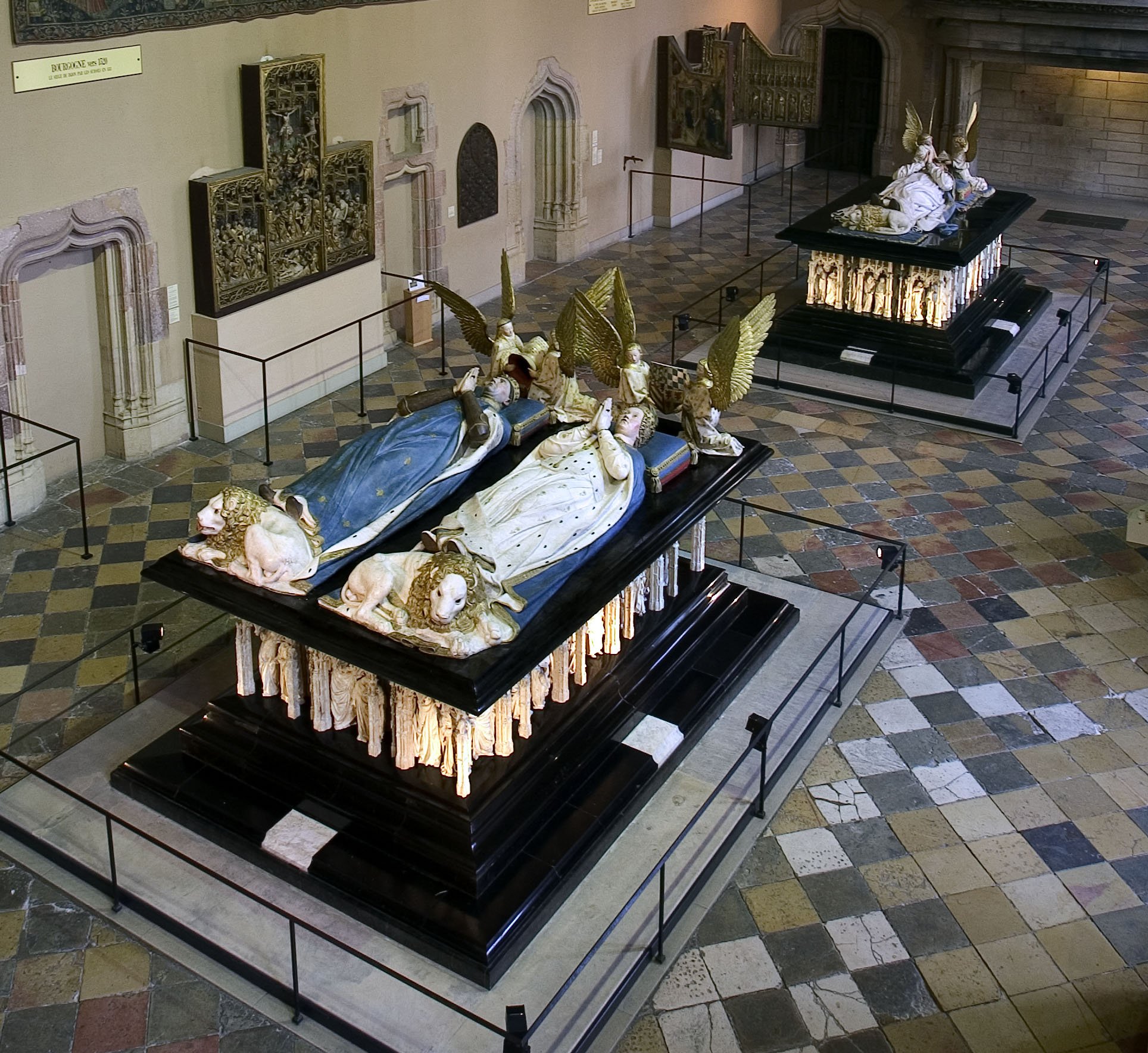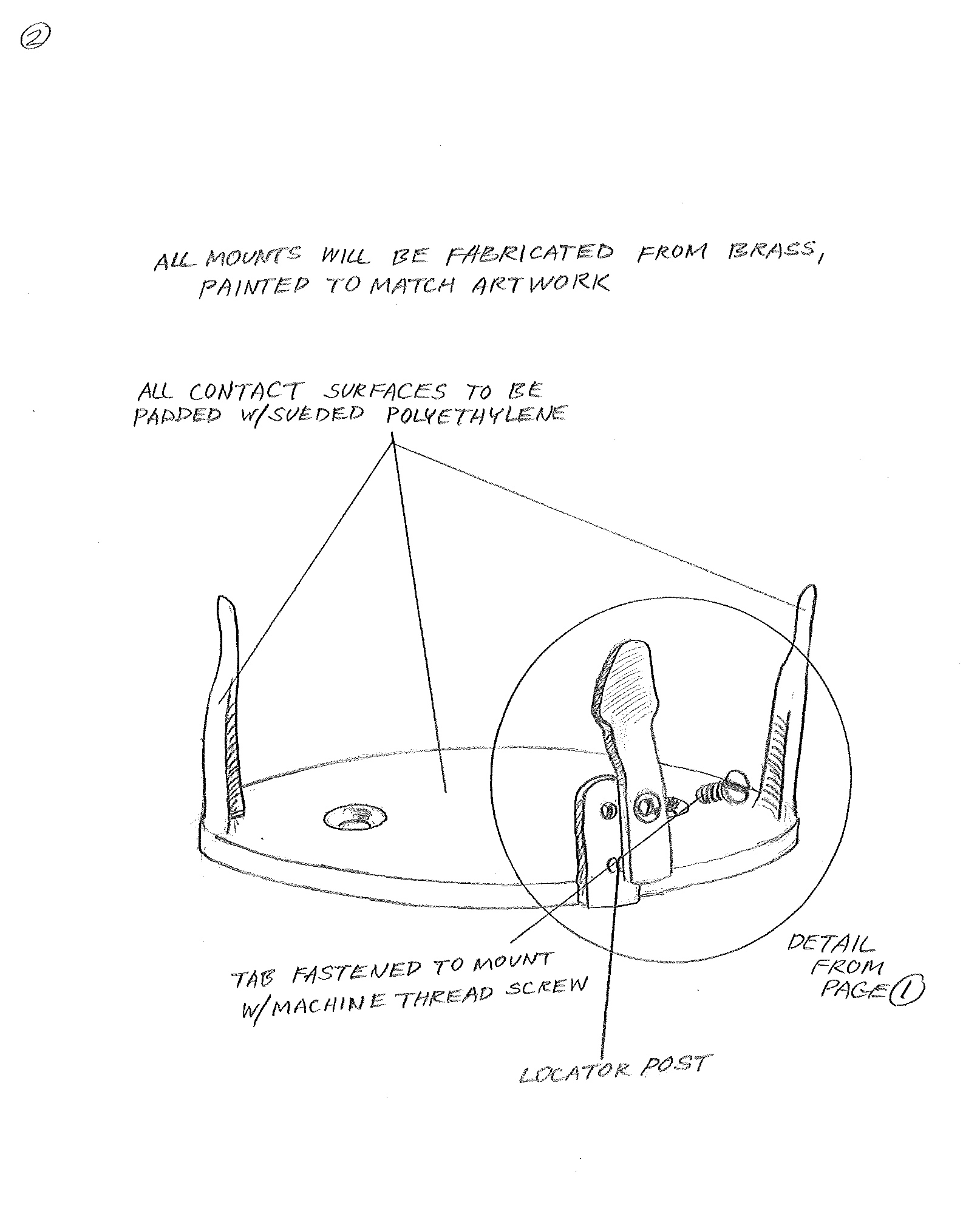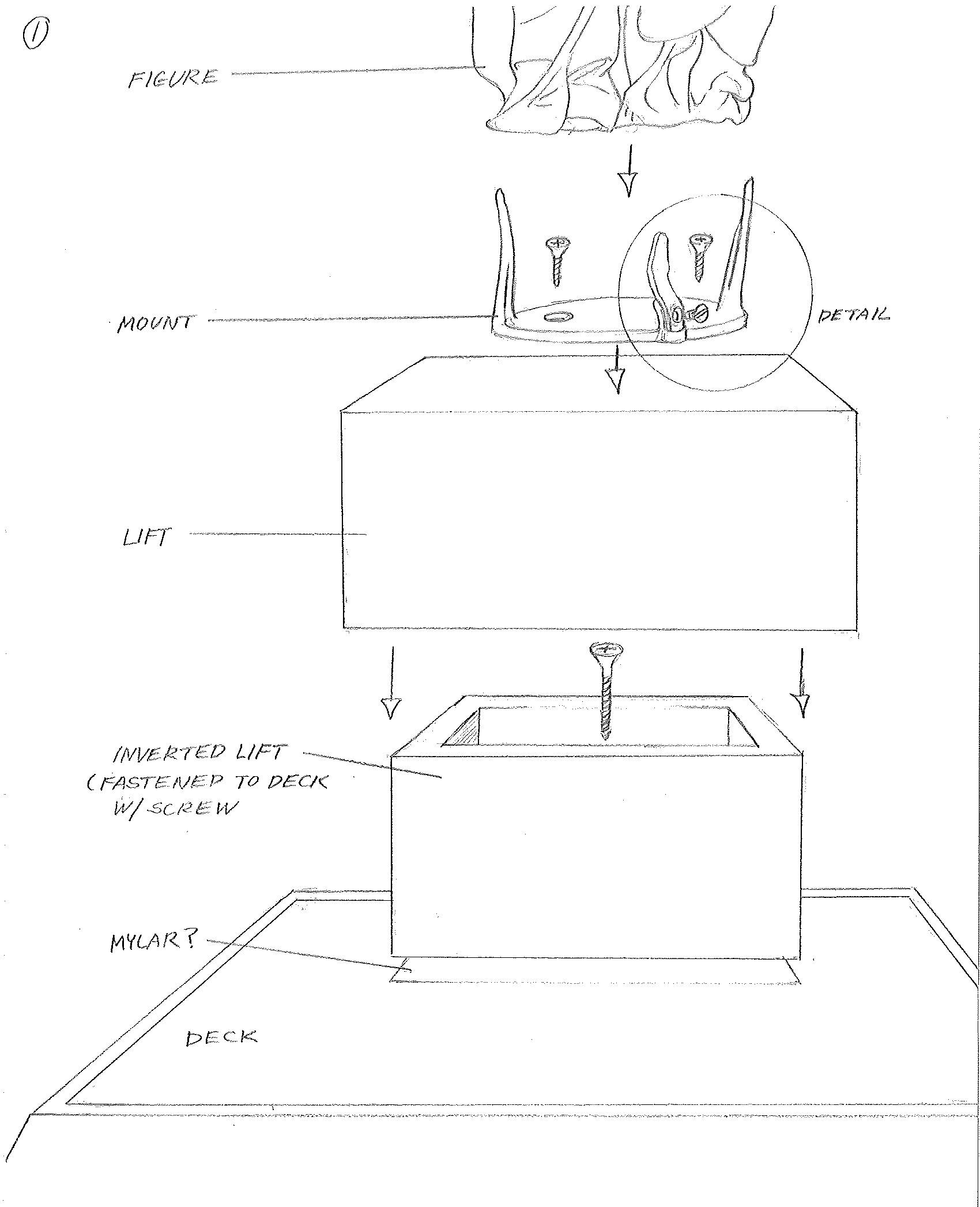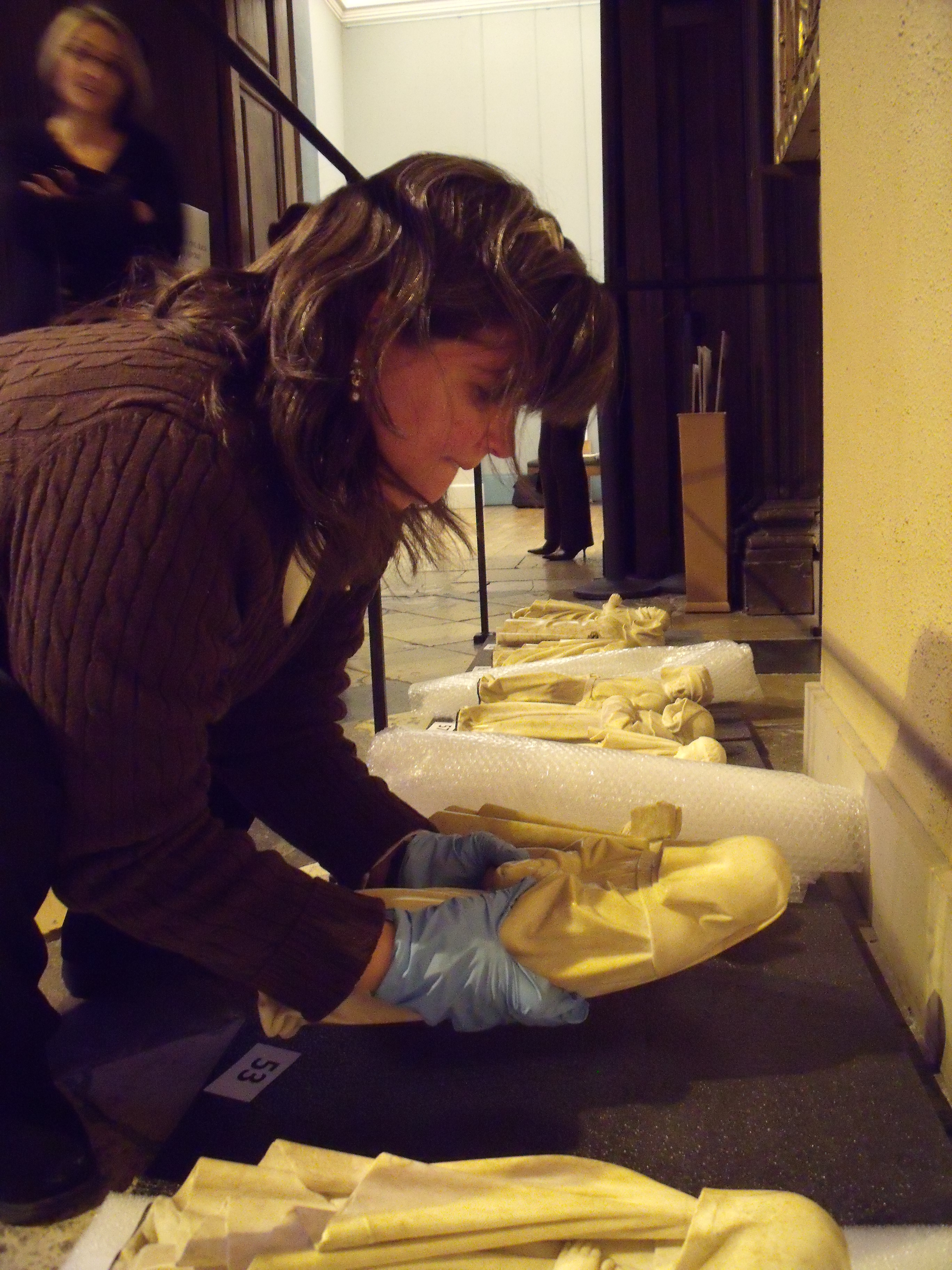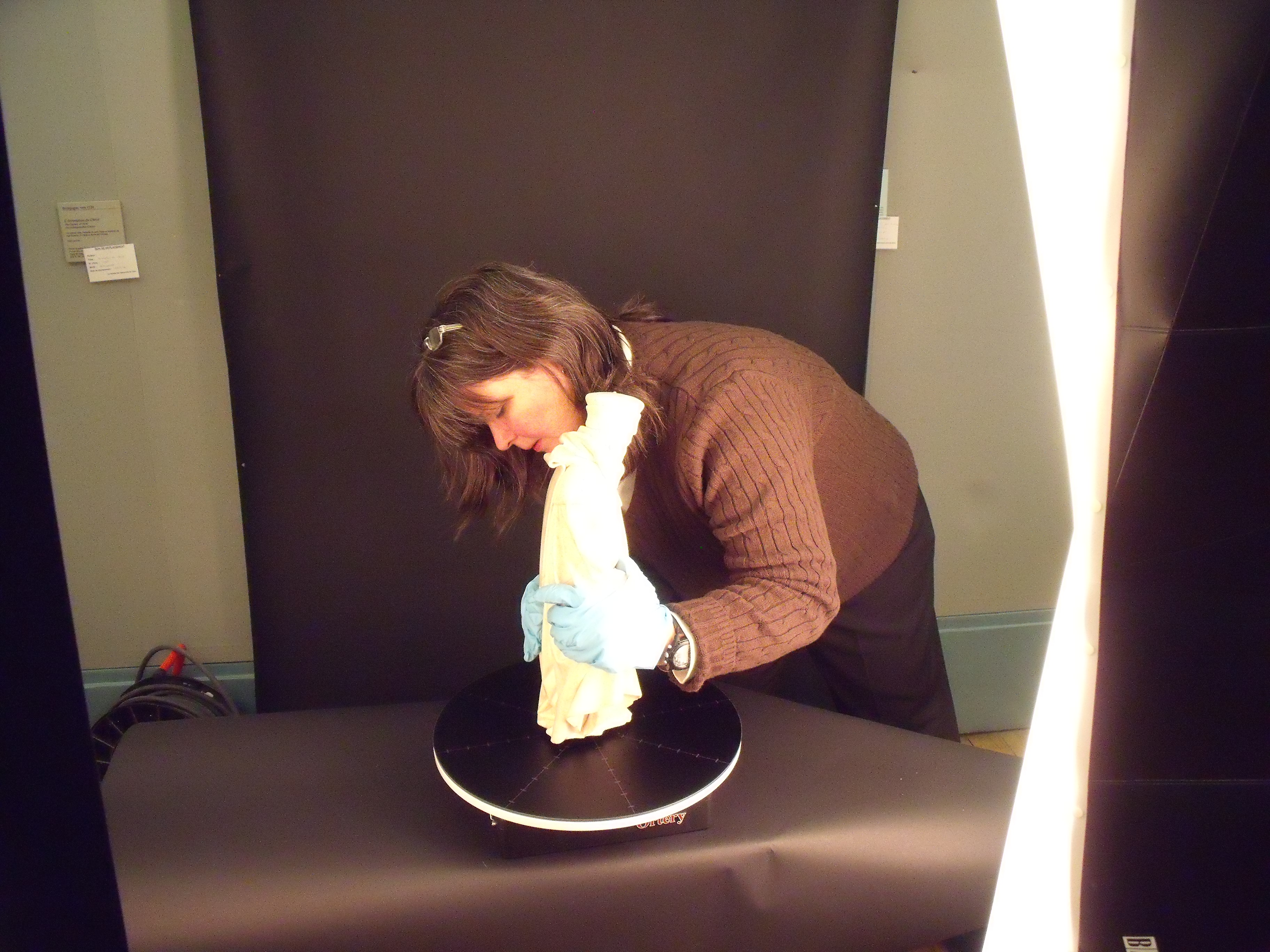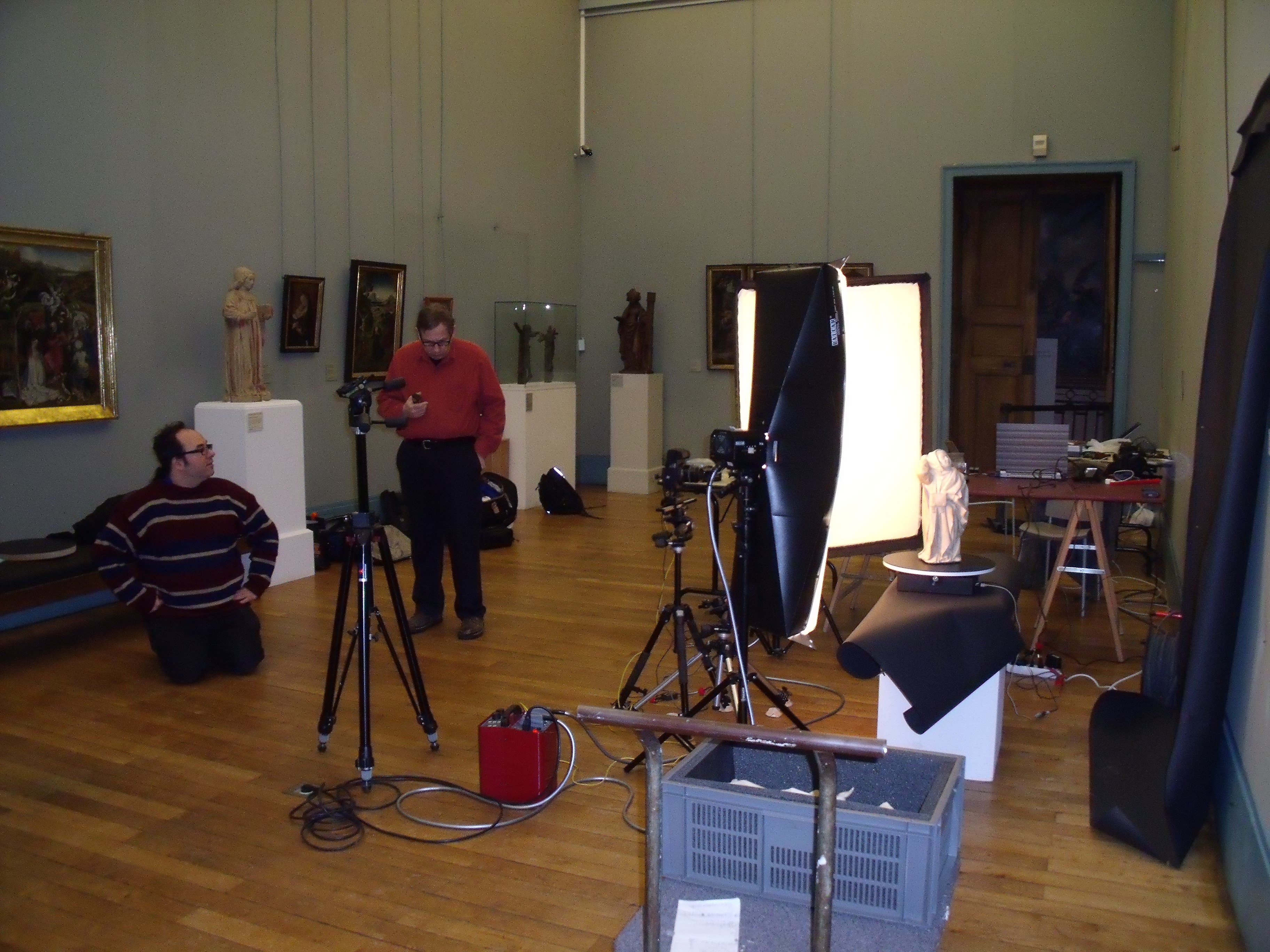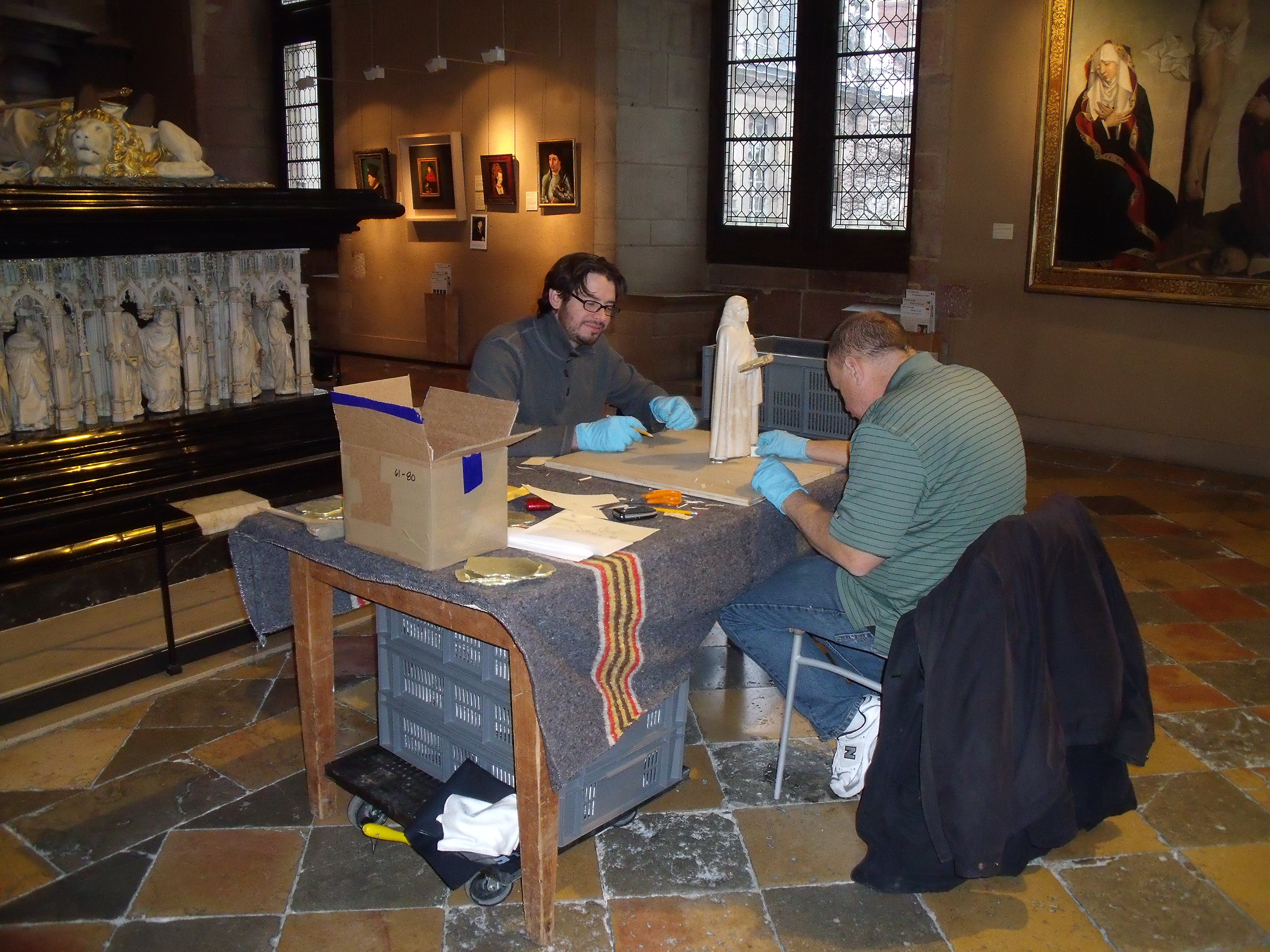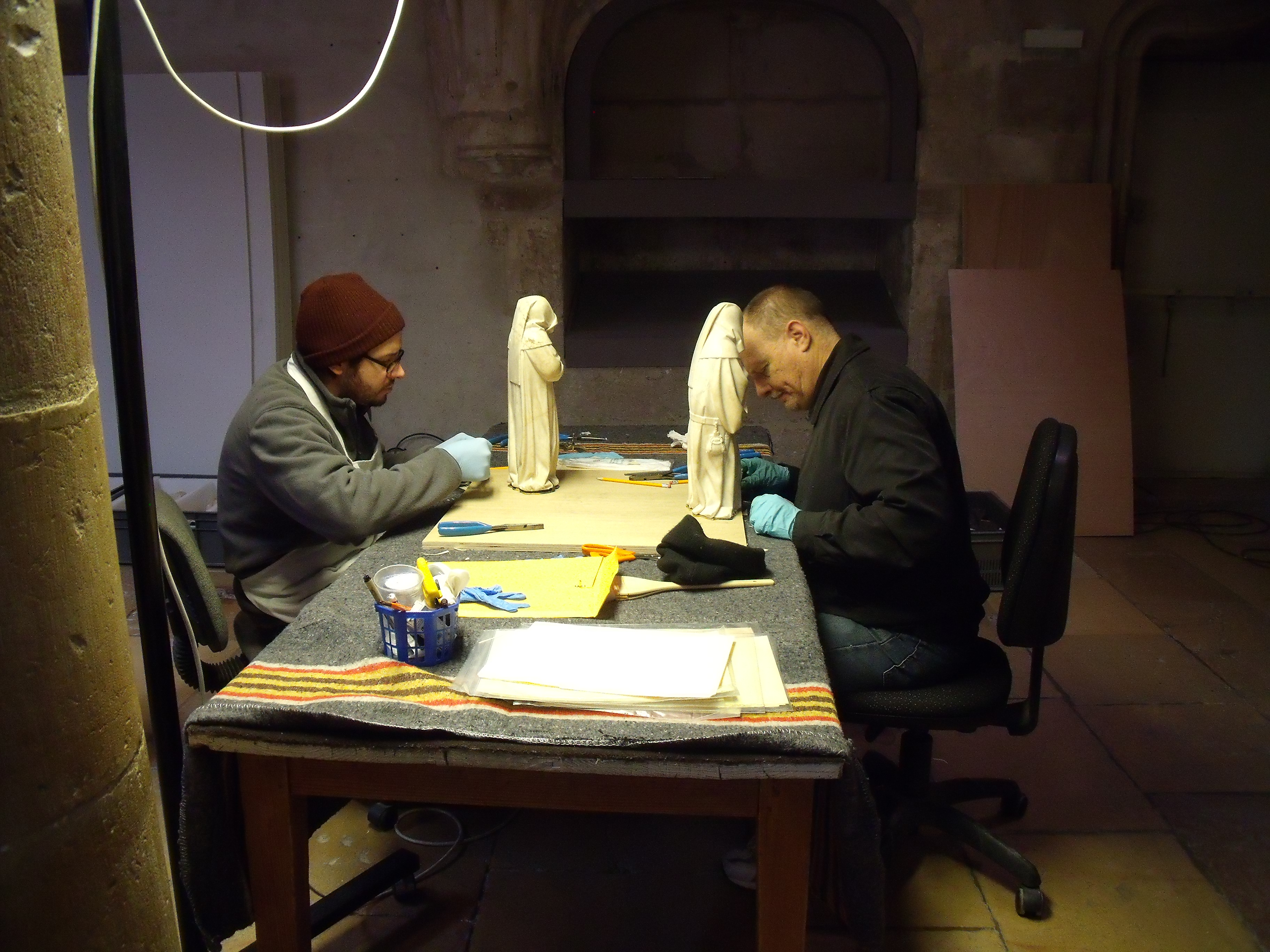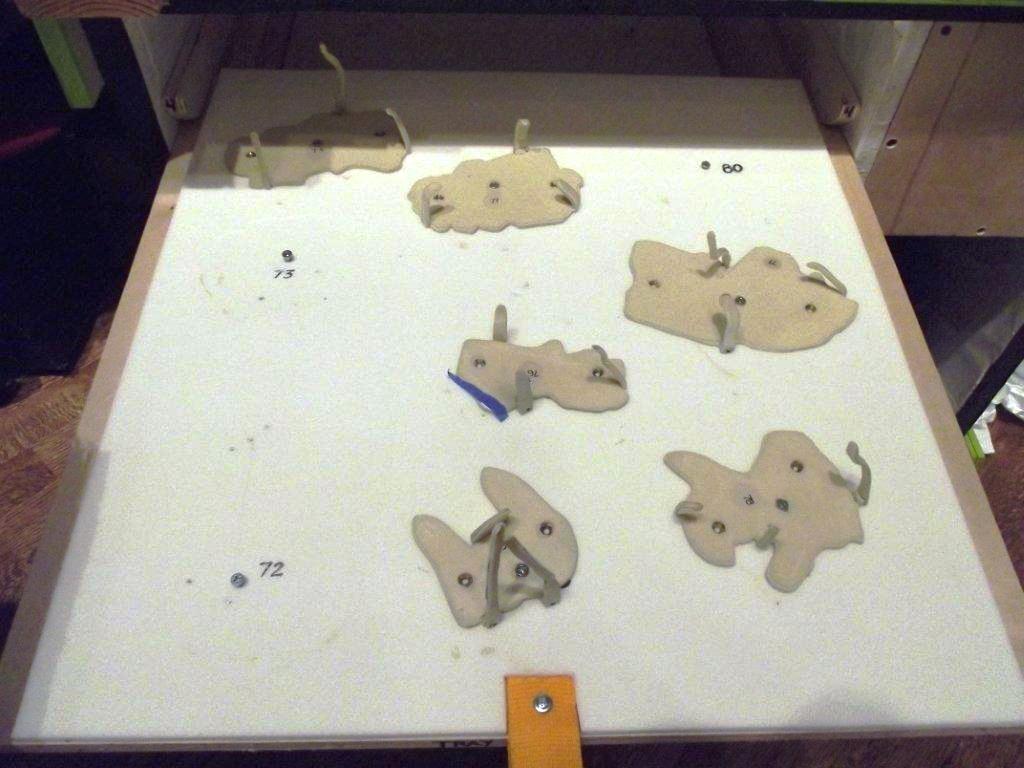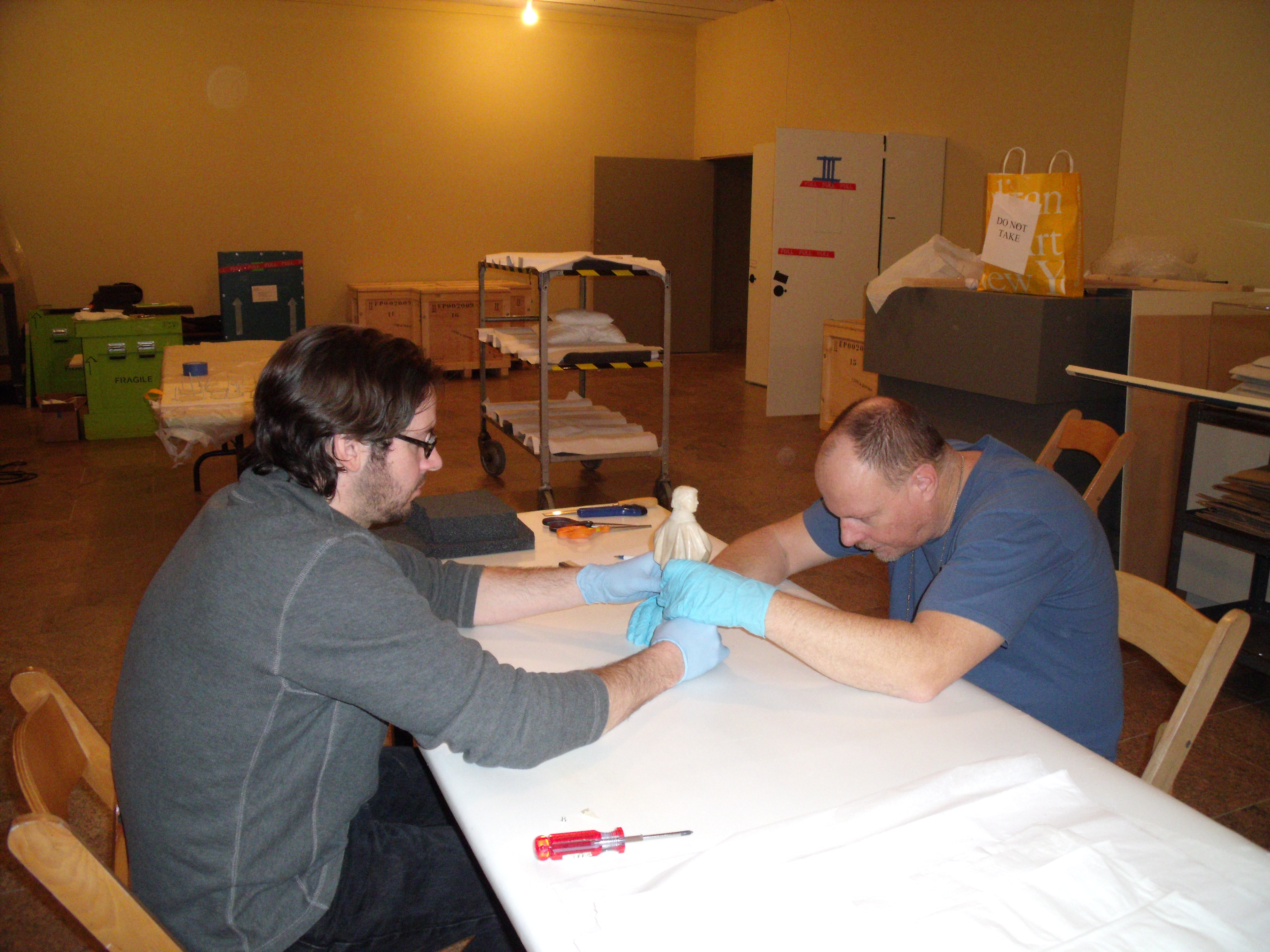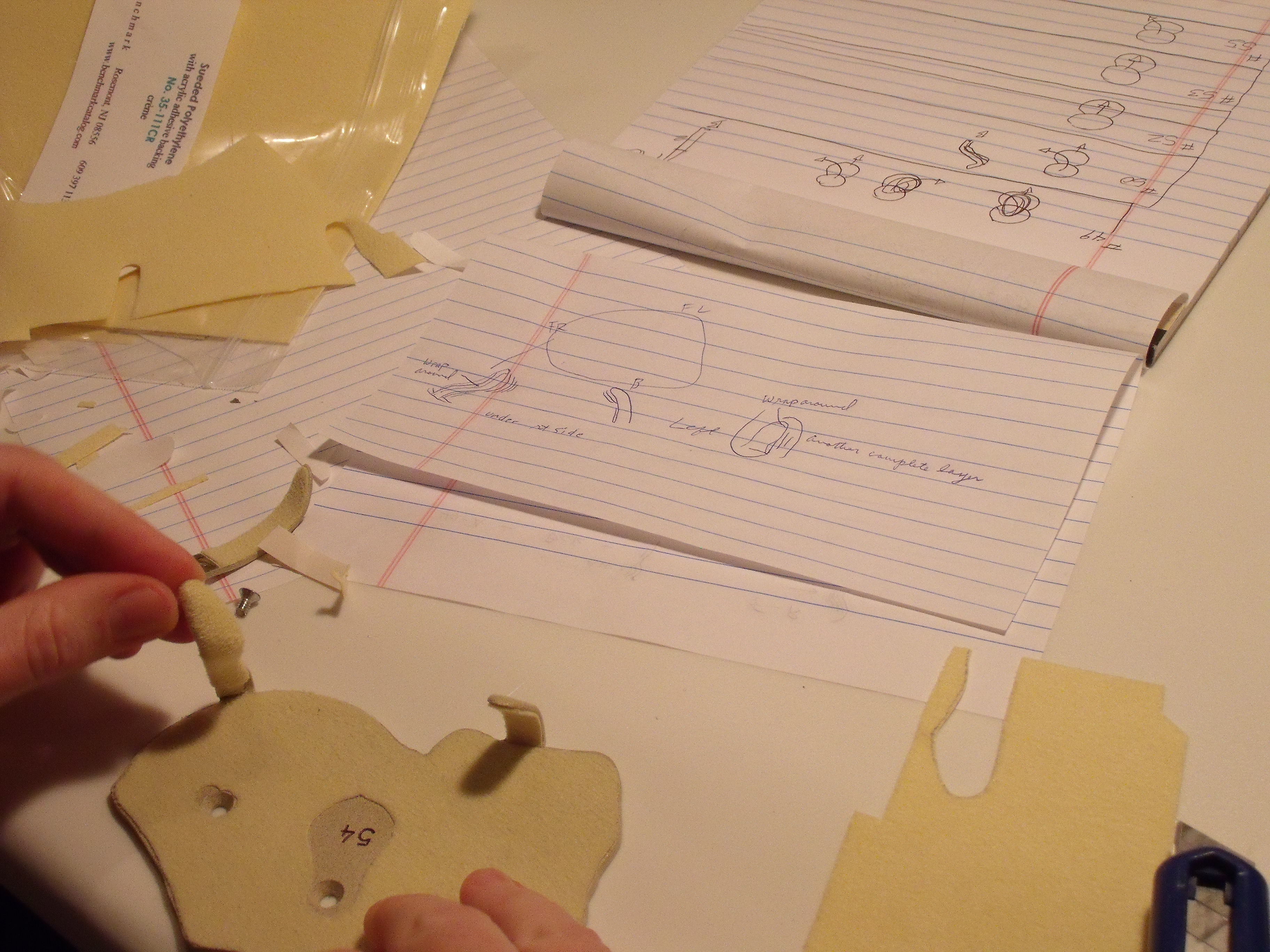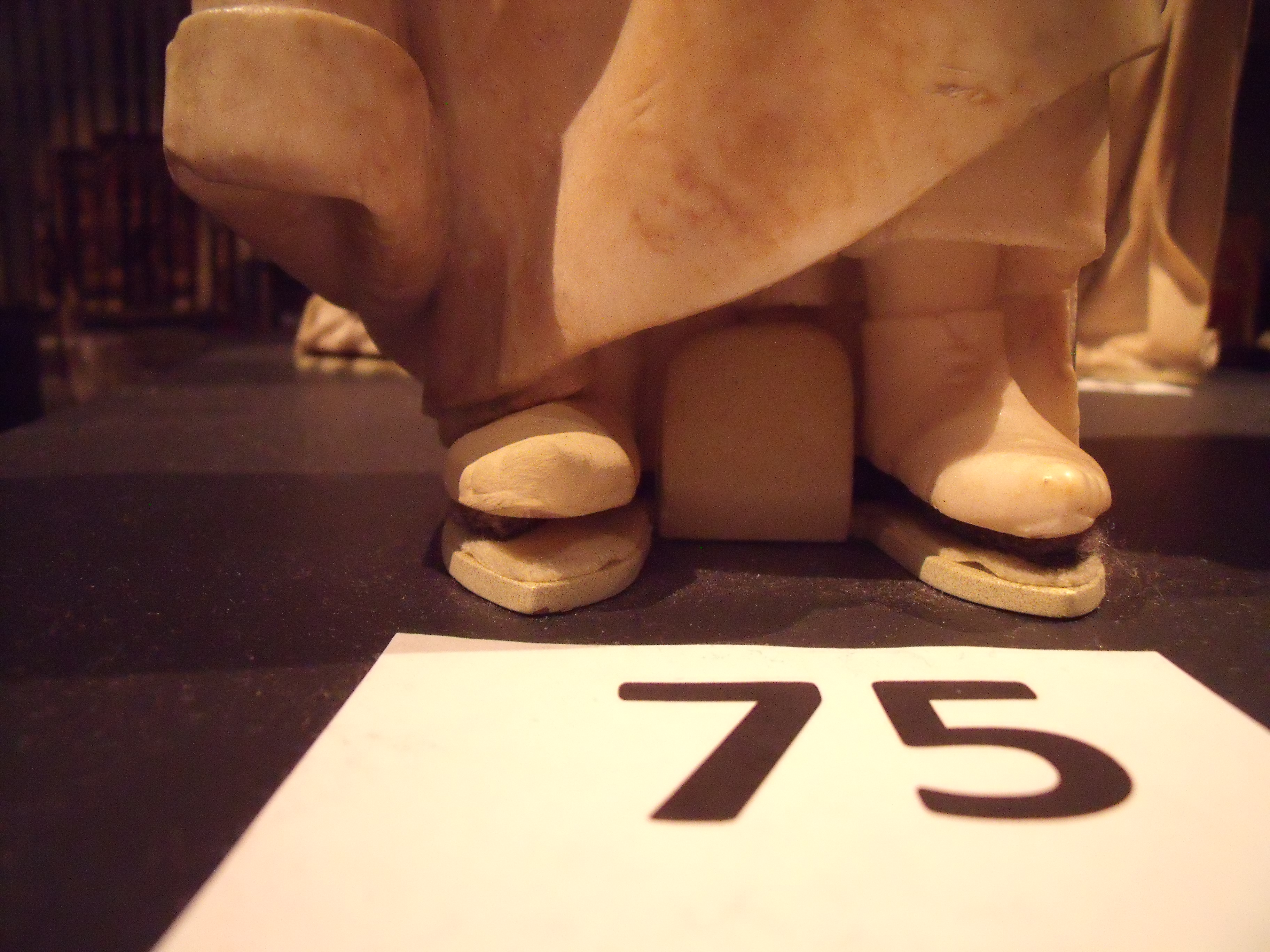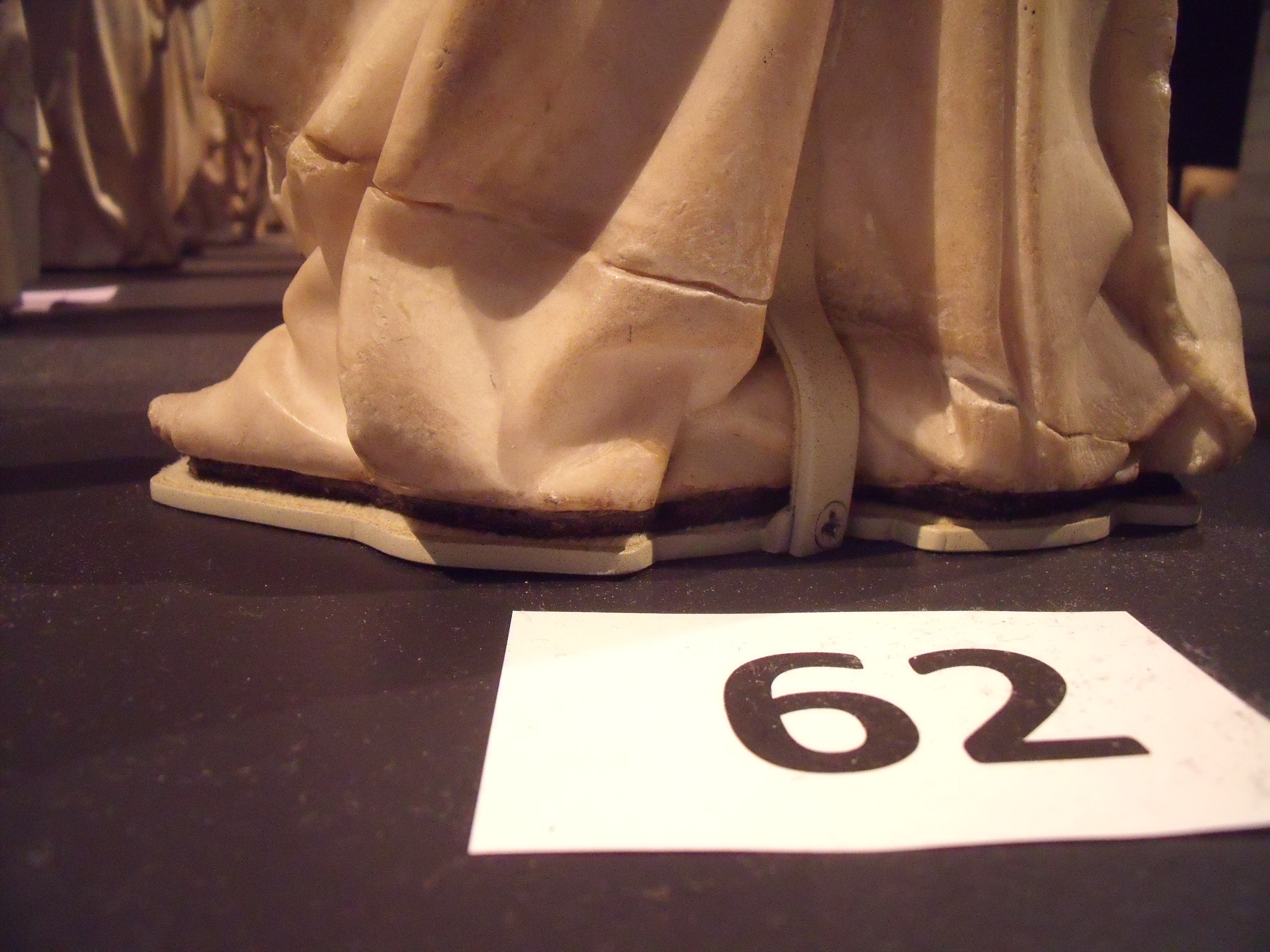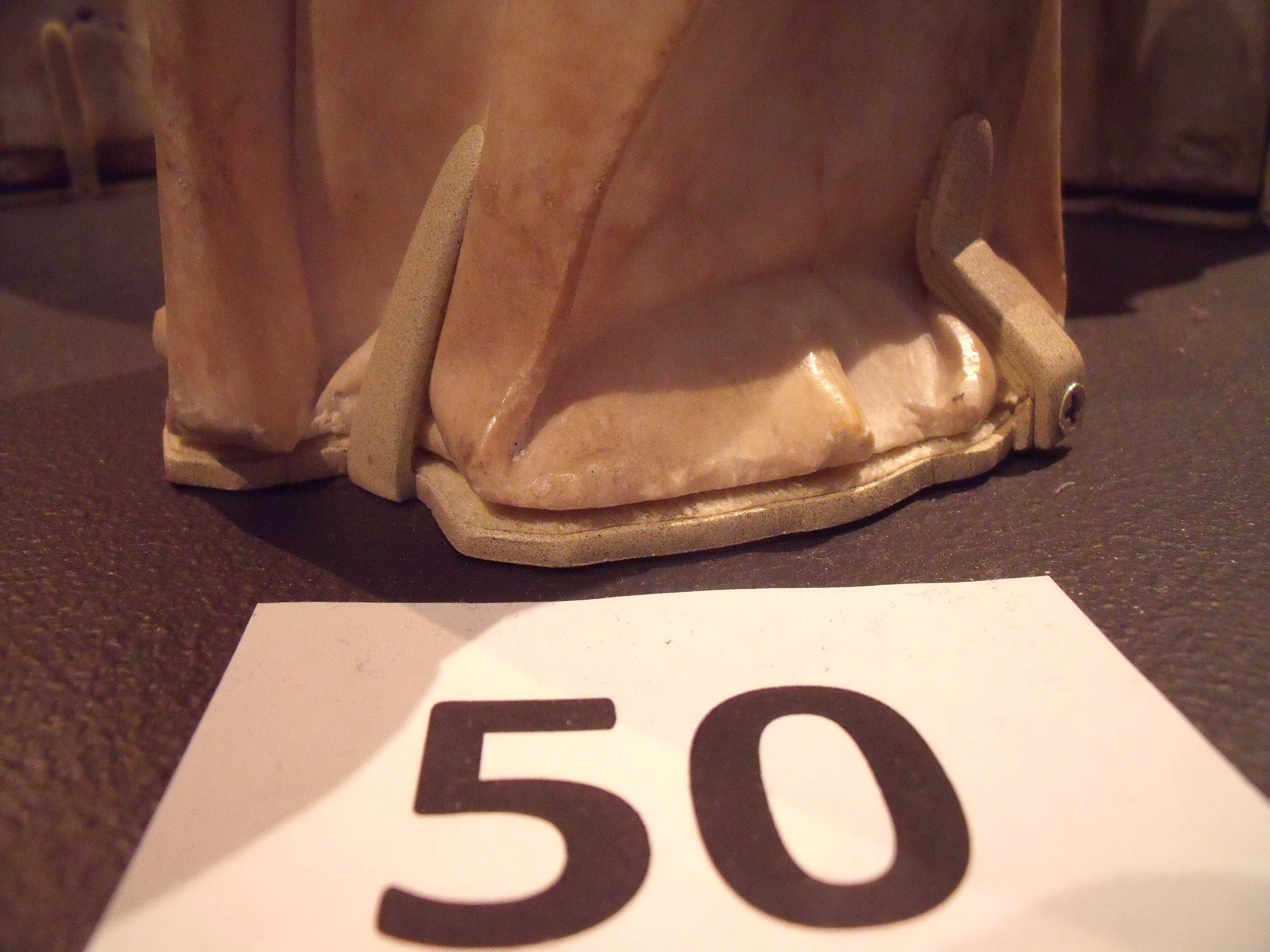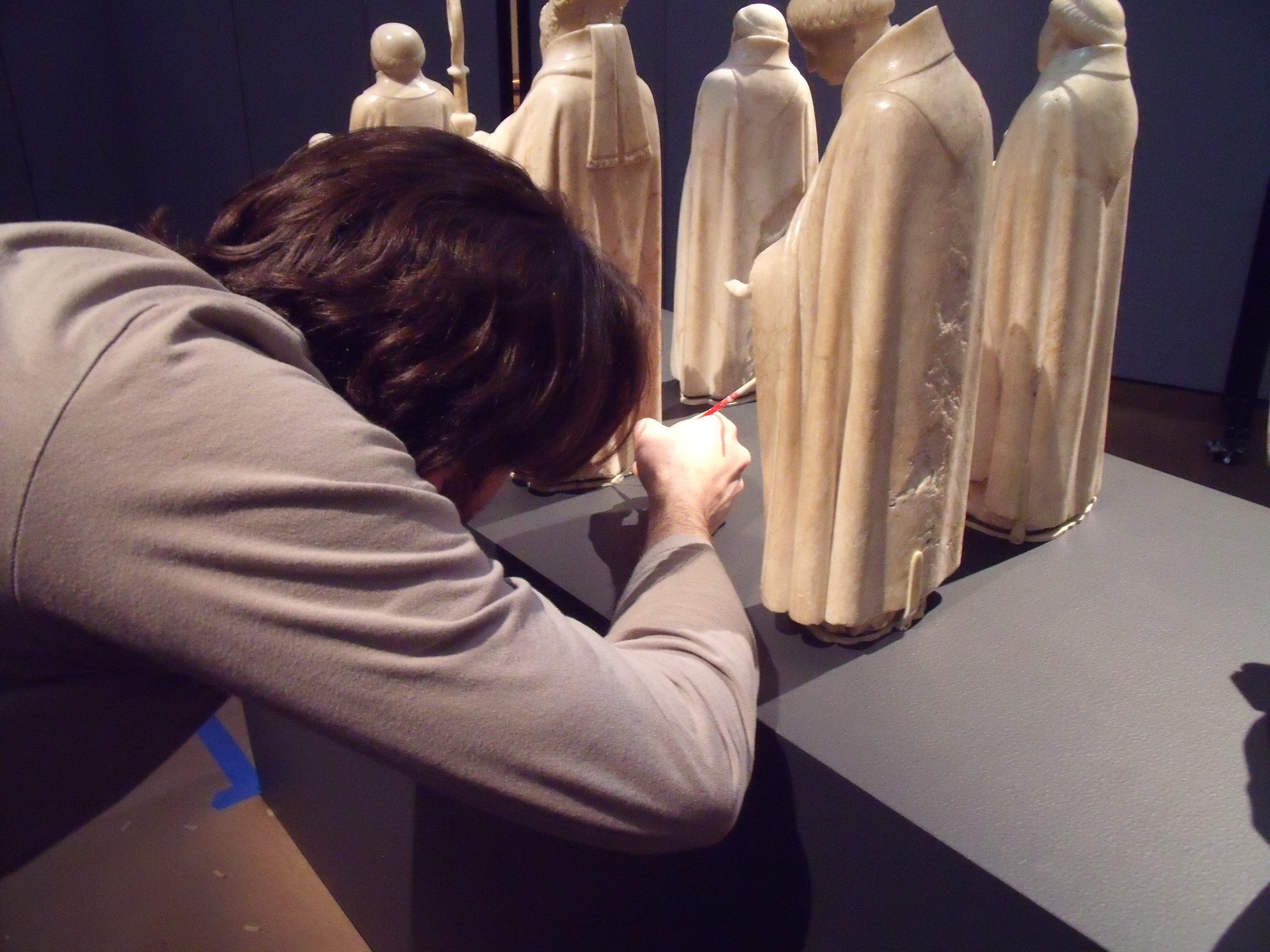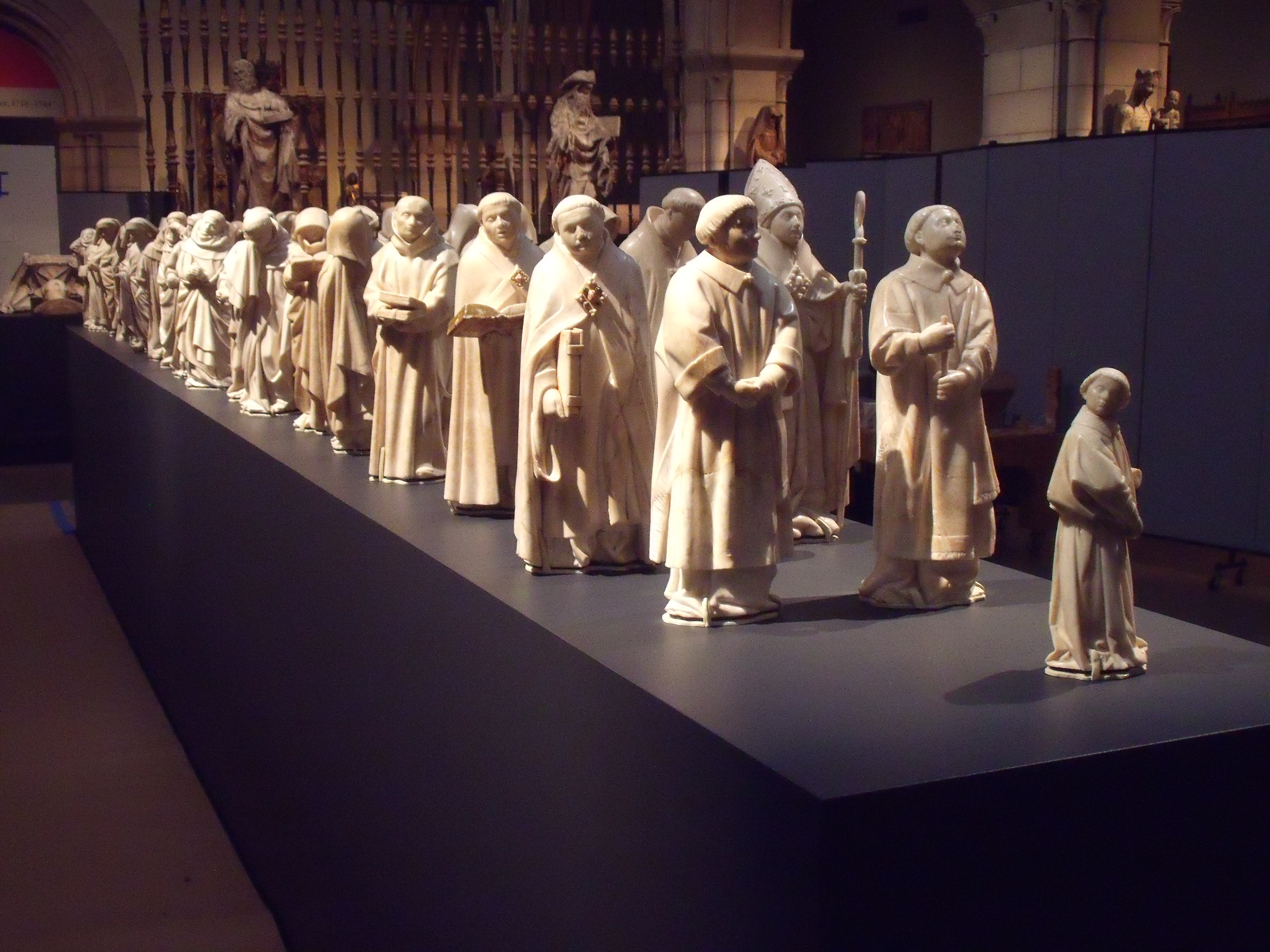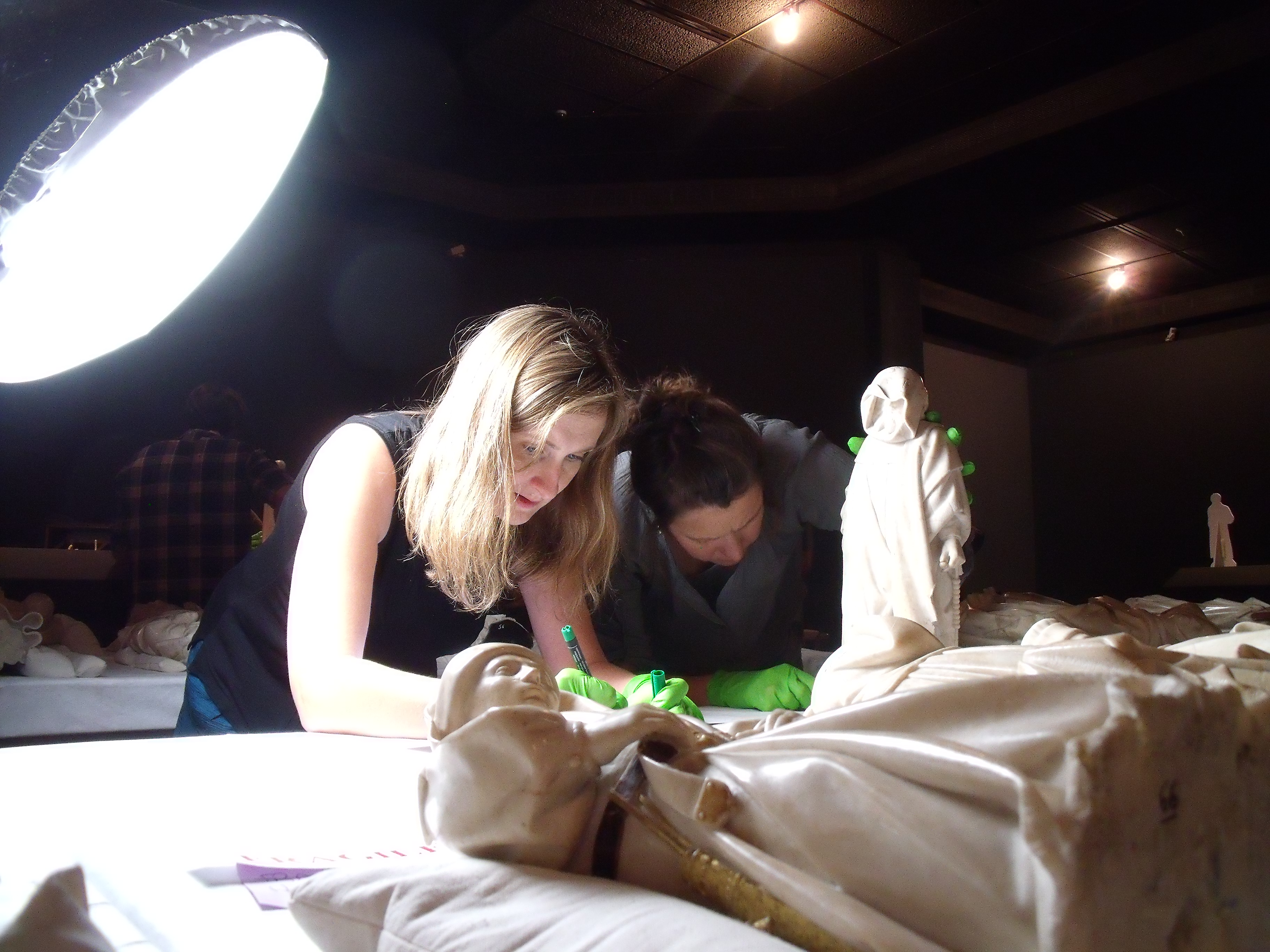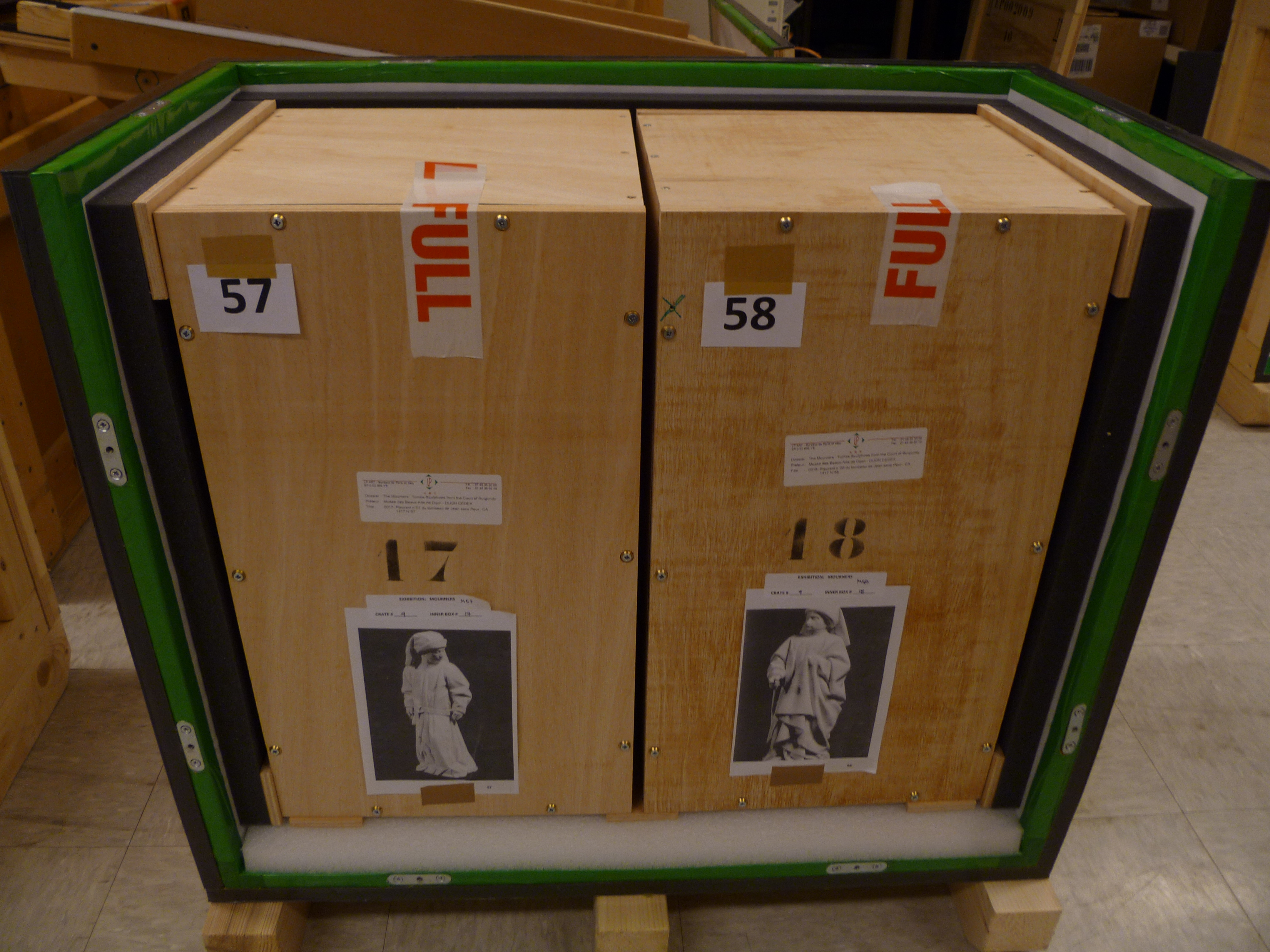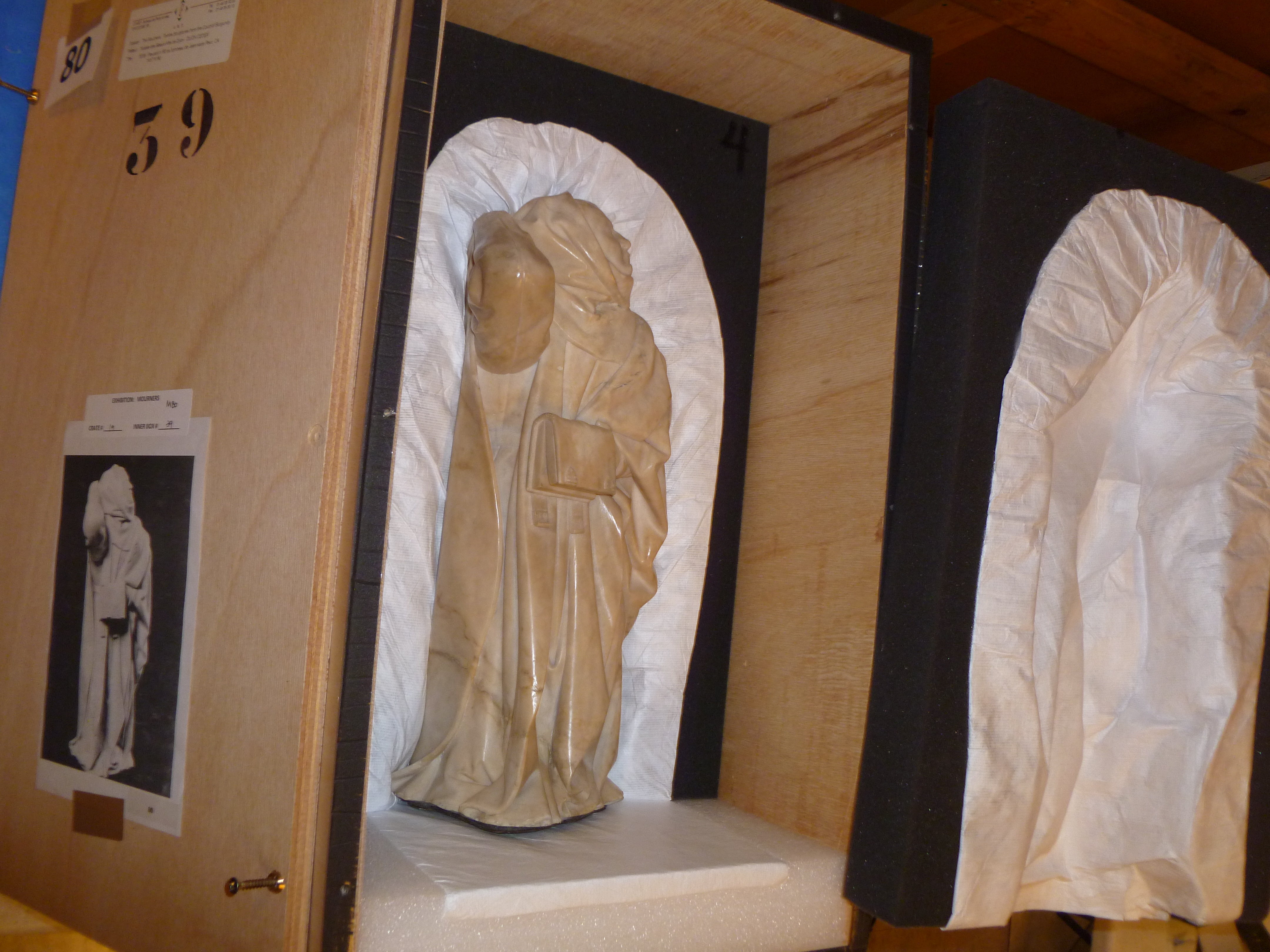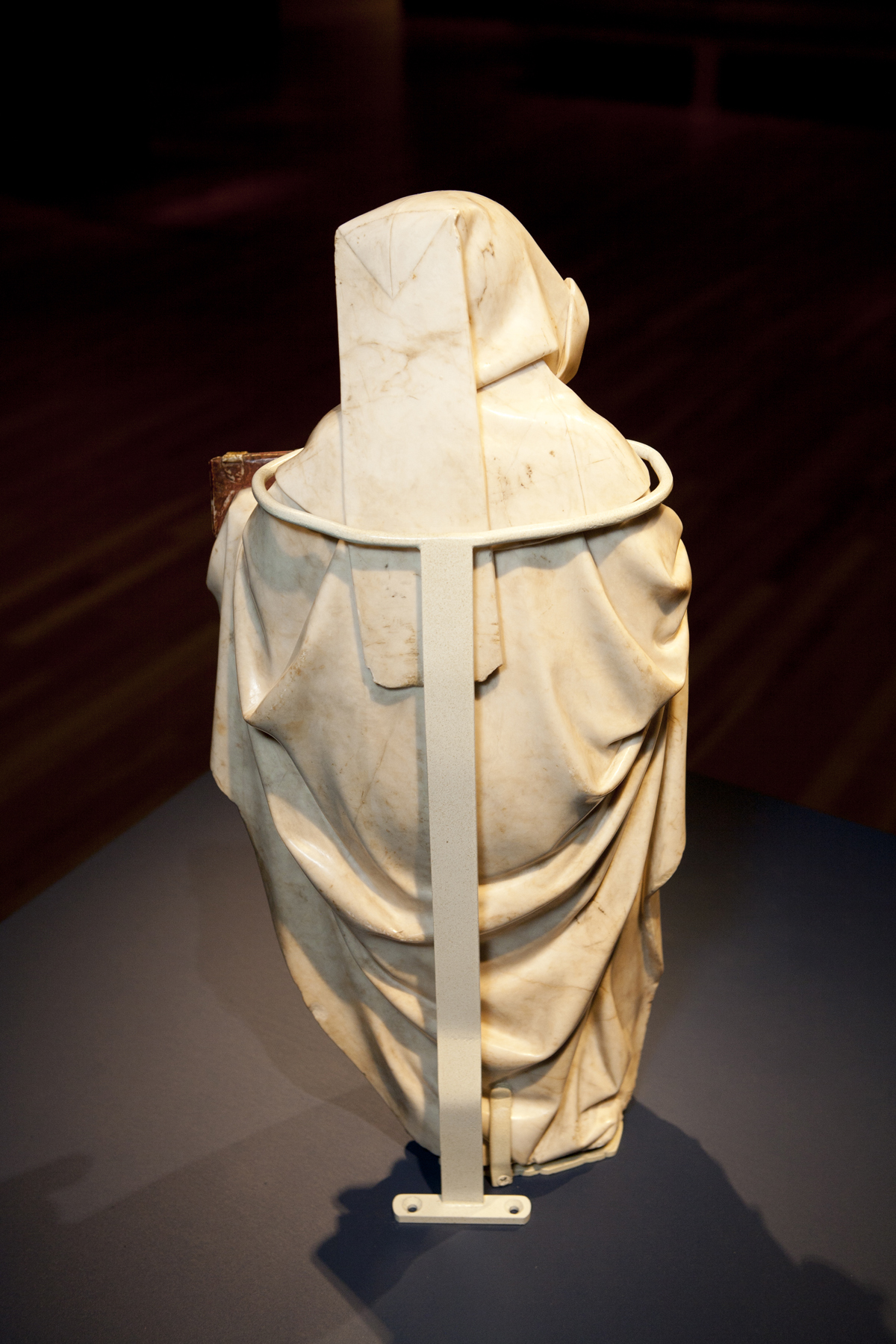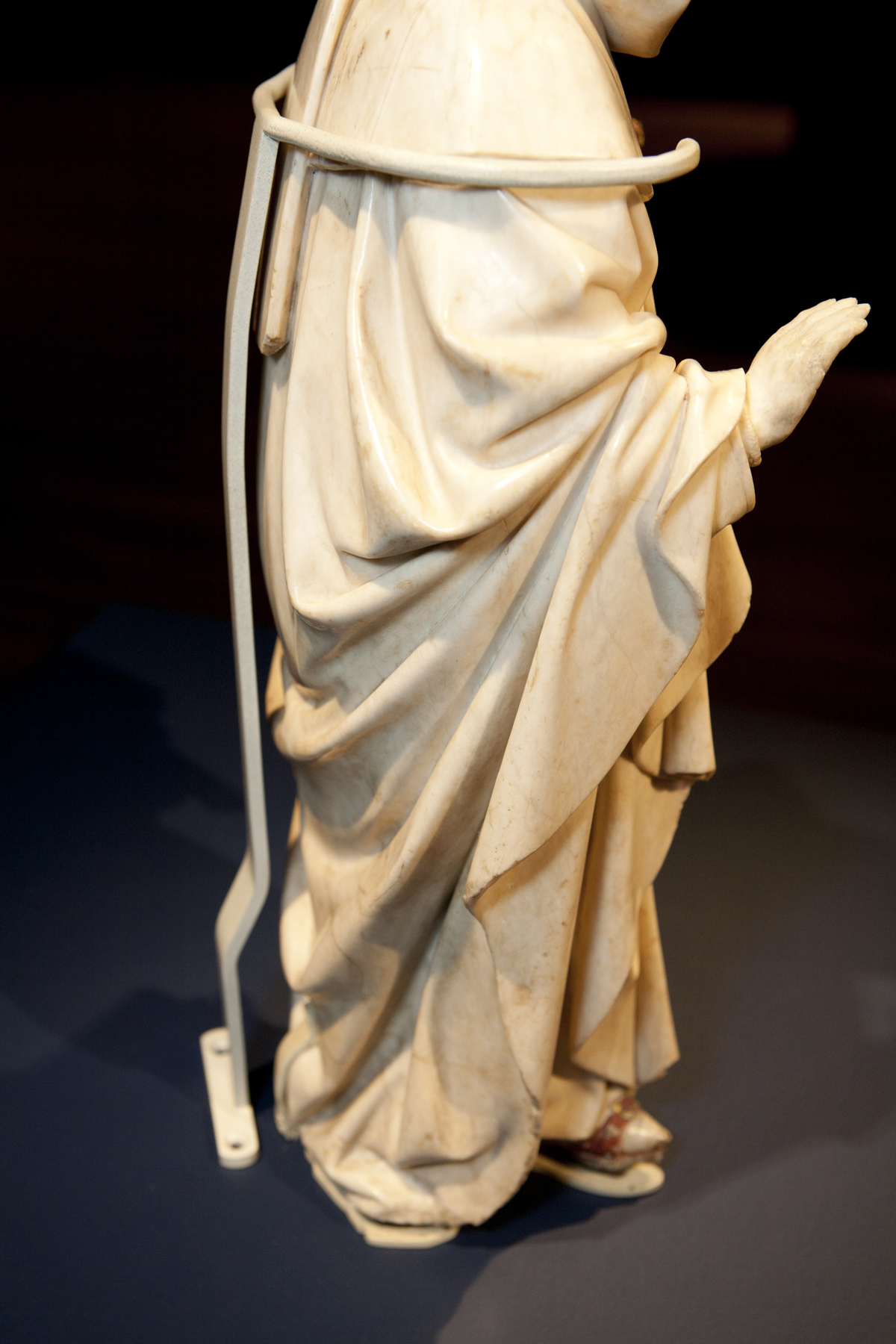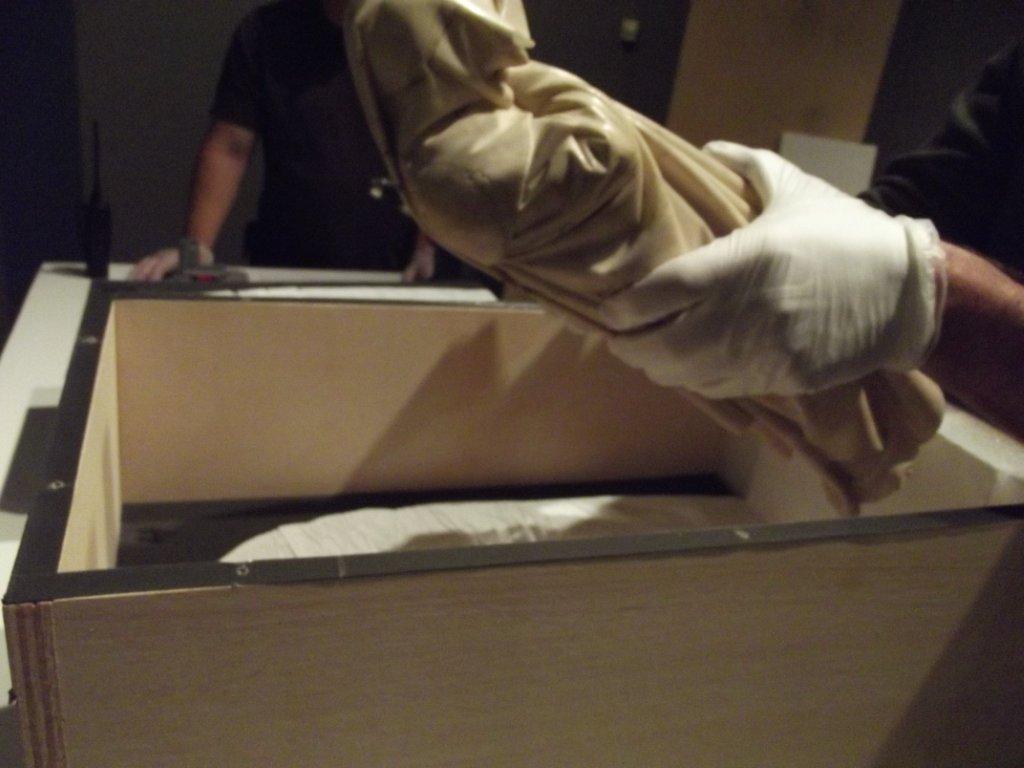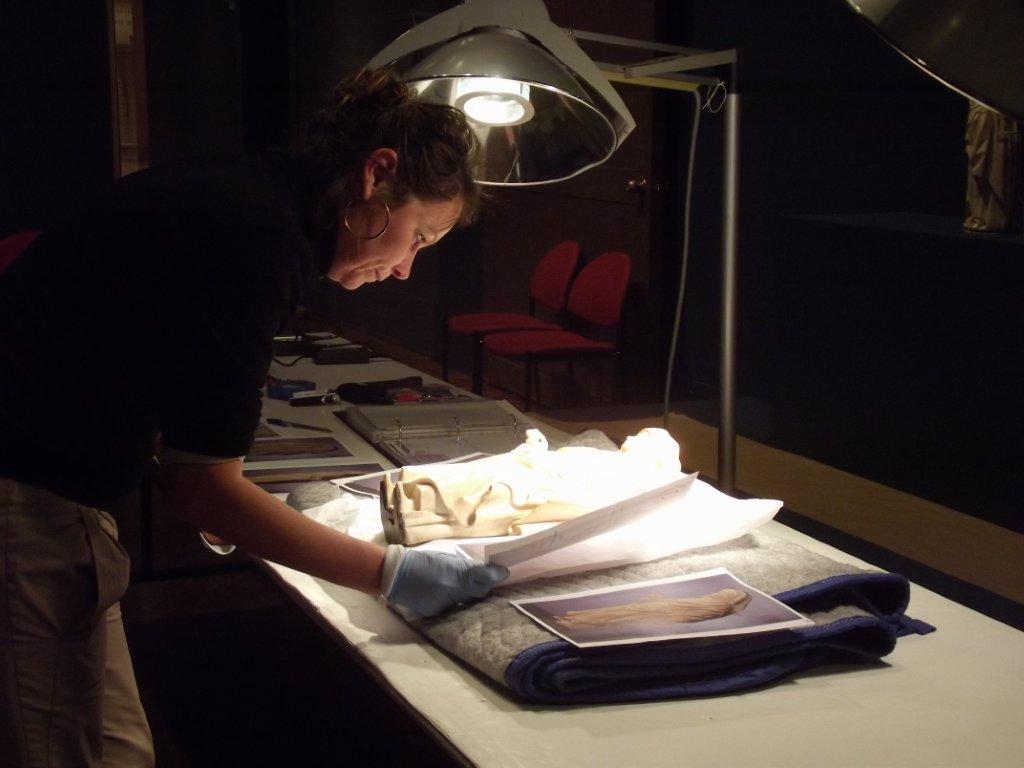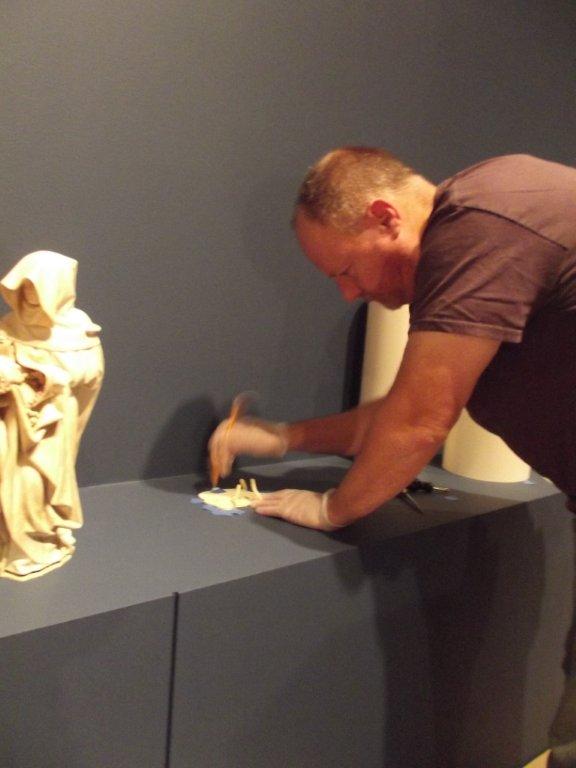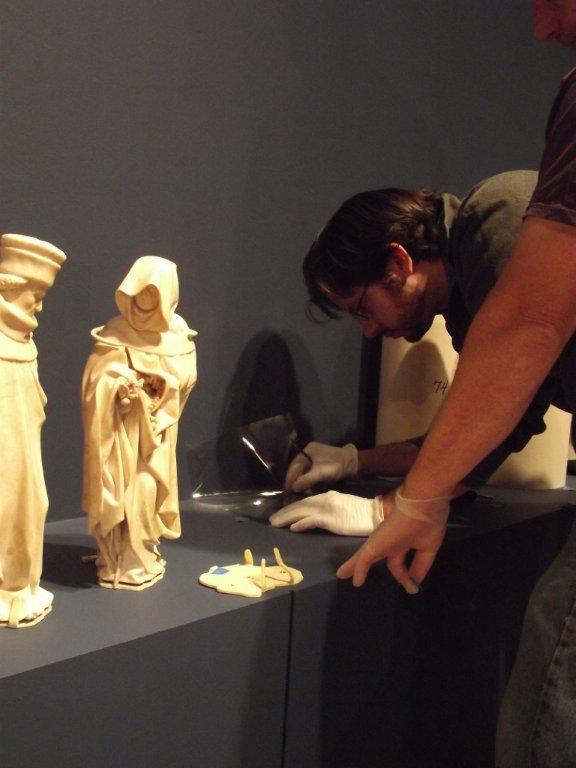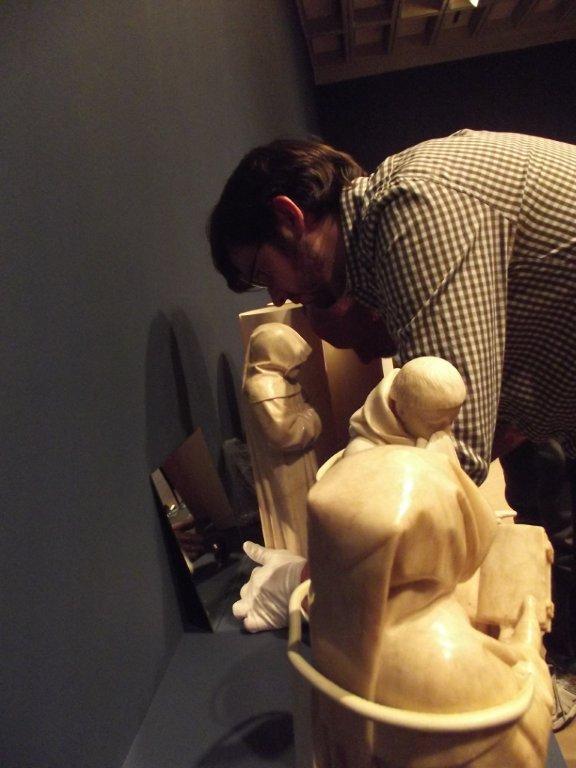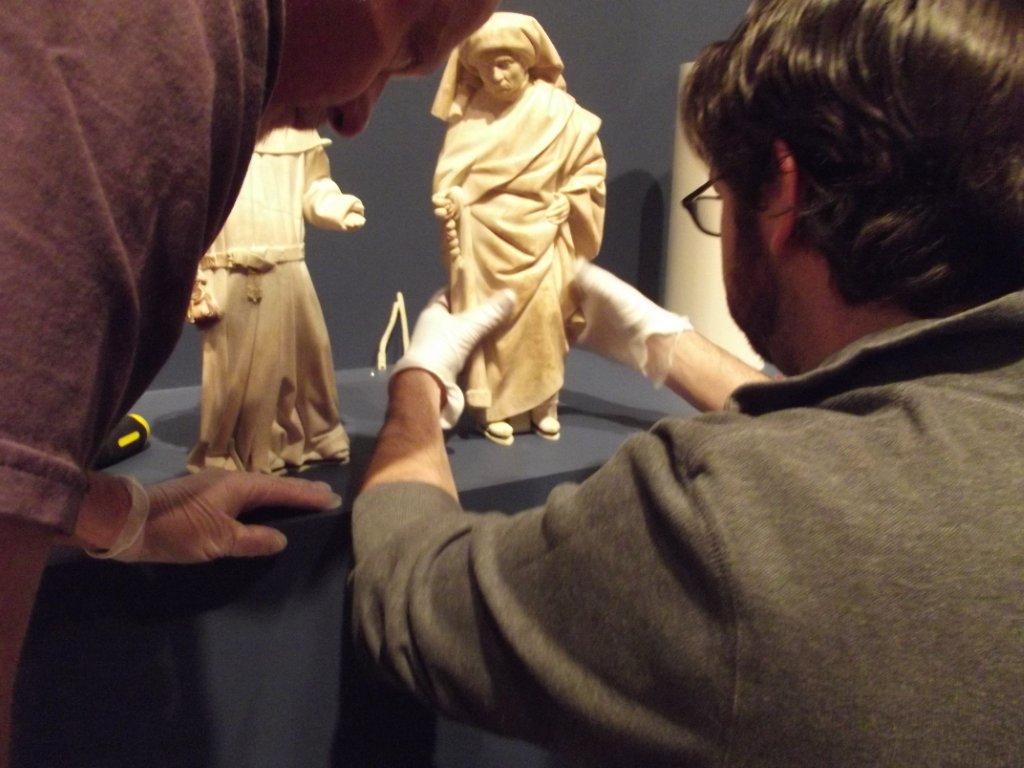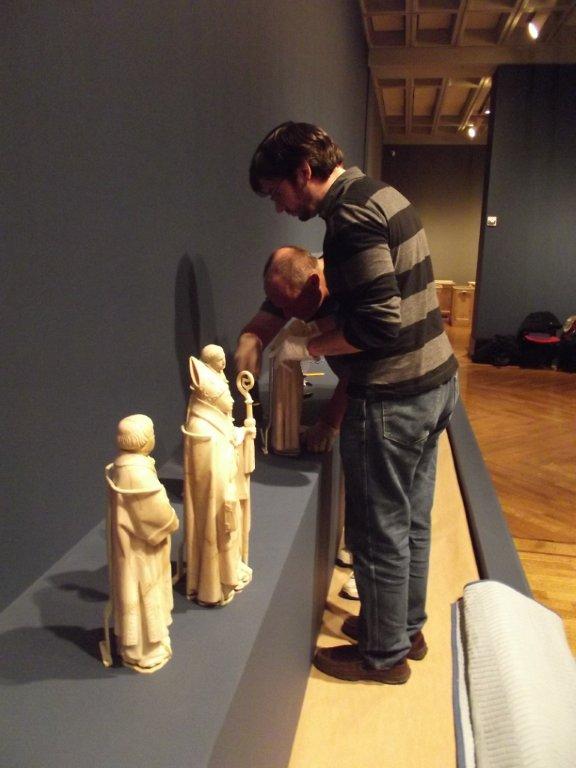It usually takes a few years to pull together a complicated, large and/or high value exhibition with loans from all over the world. The Mourners is an exhibition with only forty objects, and most from one source. So why did this project take about three years to open at its first venue, and why was it so complex? Well, the little sculptures are fragile, medieval and made out of stone—alabaster. In addition, they are the most treasured objects at the Musee des Beaux—Arts Dijon. The Director of the Museum, Sophie Jugie, had to promise the Mayor that absolutely nothing would happen to the little guys while they toured the United States for 2 ½ years!
After a year of conversation about the project with various parties, the DMA was asked by FRAME (French Regional American Museum Exchange) to organize and manage the exhibition tour.
In 2008 I visited Dijon to meet the staff, begin coordinating the logistics of our agreement, and of course to see the sculptures first hand to have a better idea of requirements for handling, packing, shipping, etc.
In 2009 Preparator—and head mount maker—Russell Sublette visited Dijon to trace the bottoms of the sculptures in preparation for mount design. Over a few months he completed a couple of different designs for the mounts, here is one example.
After the mount decisions were made with Dijon, we had to purchase everything we would need: paint, felt, screwdrivers, drills, lots and lots of brass plate, and different width brass rods. Meanwhile a French packing company was busy building crates.
In January of 2010 we landed in Dijon. It was VERY cold. We immediately drove to the local “home depot” to purchase two heaters since the the Musee des beaux-arts is in the basement—of a stone medieval building. To make very detailed mounts, you need dexterity, your fingers cannot be frozen due to the cold.
I worked with the Dijon staff and Benoit Lafay (France Institute of Conservation of Works of Art) to remove the sculptures from the tomb.
The next three days we spent on high resolution photography of each sculpture, which you can appreciate in detail by going to mourners.org. Leonard Steinbach and Jared Bendis devised and organized the impressive photography equipment to complete the amazing photography. We set up shop in the gallery next to where the tombs are located. They took approximately 350 photographs of each sculpture!
Meanwhile, Russell and DMA colleague John Lendvay worked on making each mount. The first three days they worked in the gallery. And when we left the museum on Friday evening, we walked out and into a raging blizzard—the worst Dijon had seen in something like 80 years! The city looked beautiful, but it was oh so cold.
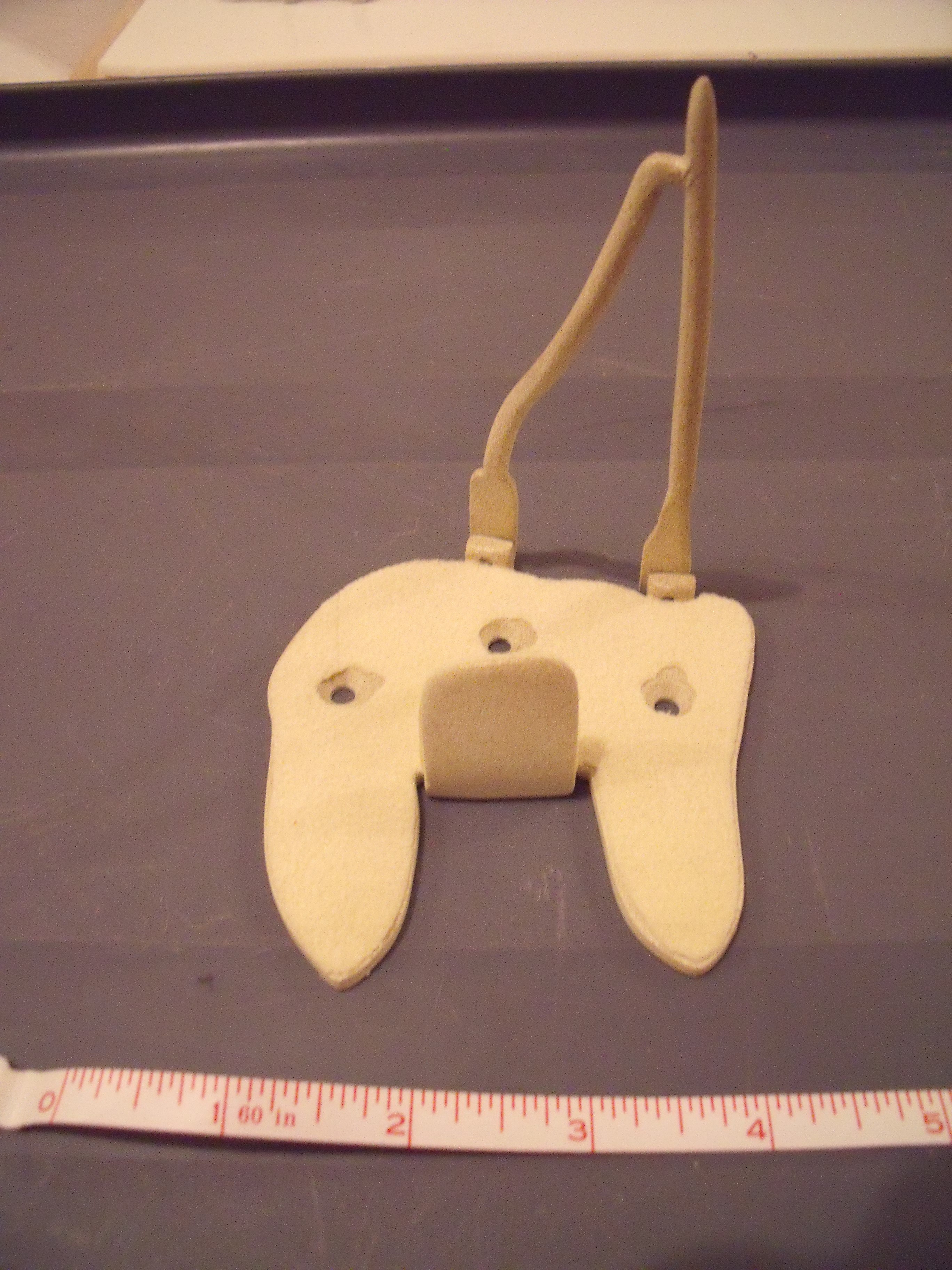
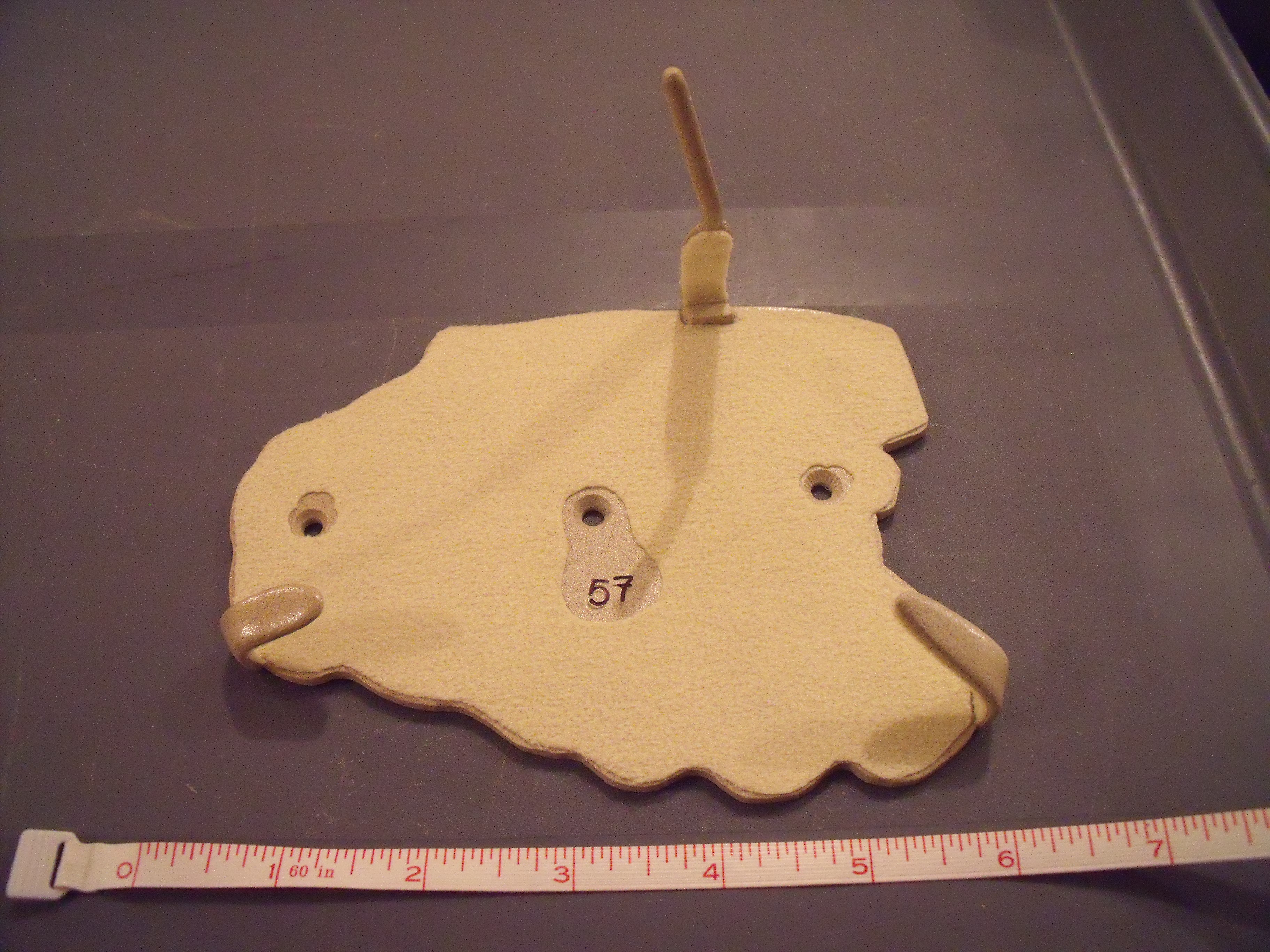
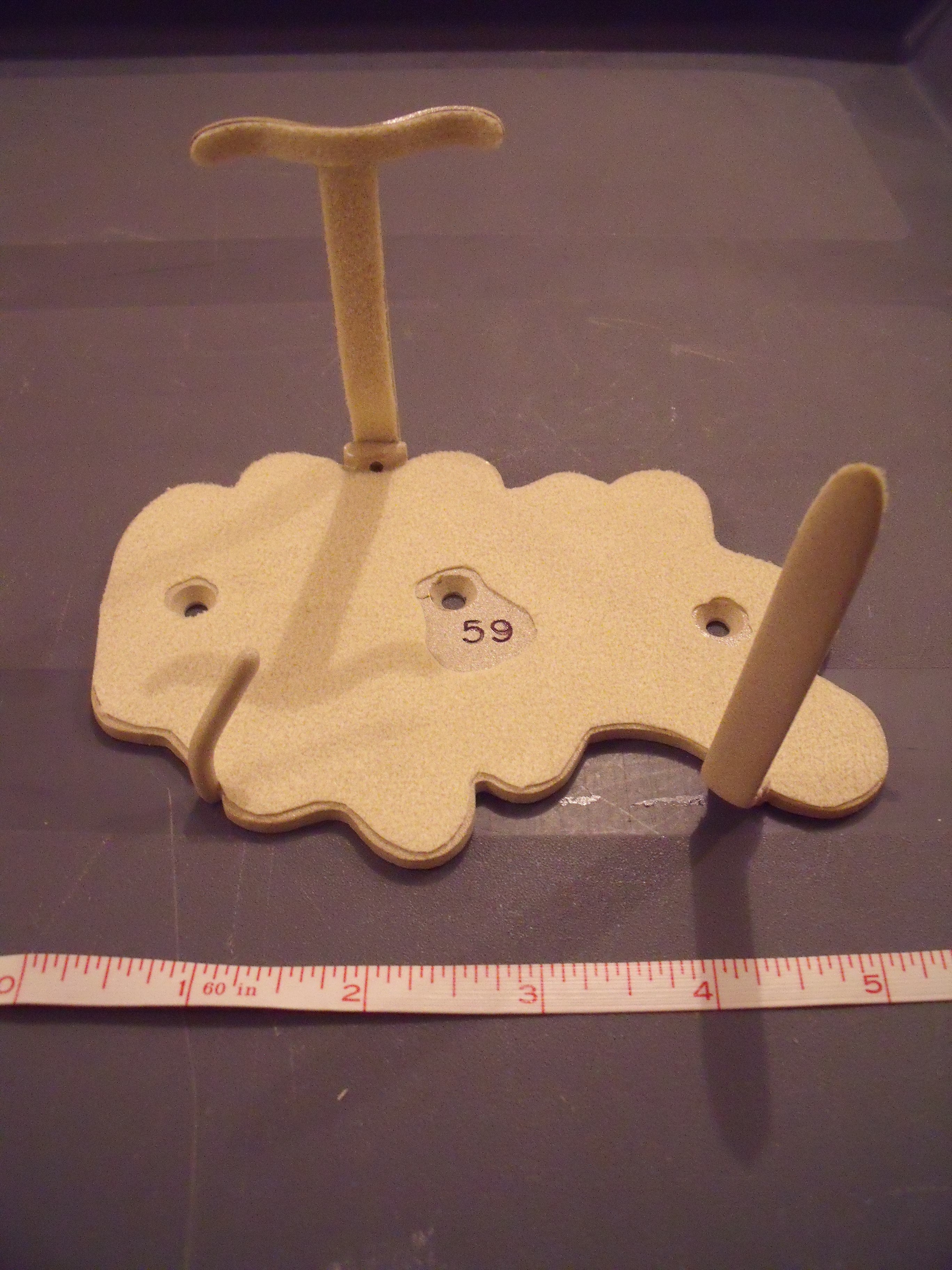 The mounts are crucial to the safety of the sculptures and travel in their own crate with all the supplies needed to make adjustments, touch up paint, replace padding, etc. They were made to fit each individual sculpture, painted to match the color of the alabaster, and padded with conservation felt.
The mounts are crucial to the safety of the sculptures and travel in their own crate with all the supplies needed to make adjustments, touch up paint, replace padding, etc. They were made to fit each individual sculpture, painted to match the color of the alabaster, and padded with conservation felt.
The first stop in the exhibition tour was The Metropolitan Museum of Art. Here we had to complete more of the refinements on the mounts, as the time in Dijon had not been sufficient.
Extensive notes and diagrams are needed to make certain that each sculpture is fitted into the mount correctly.
Russell and John discussed each mount until comfortable with the design. As you can see, some of the sculptures have had repairs over the centuries, some have very small bases, and most have intricate drapery at the bottom. Many details to take into account when deciding where the clips should be placed.
At the end of the installation, a bit of very careful touch up paint might be necessary on the mounts. And they looked spectacular!
After experiencing the blizzard in Dijon, it was fitting that after we finished the installation in New York we barely made it out due to a snow storm in the east. The day the three of us left to return to Dallas, ours was the last flight out before they closed the airport. I think it is the Mourners—they like the cold! And they are wearing those fancy fur lined robes . . .
At each venue, we must complete a very detailed condition examination with the Objects Conservator of the host museum, and a Registrar from Dijon. We keep binders with dozens and dozens of photographs and notes to compare and annotate.
The sculptures travel in individual “inner” boxes and two per crate. Each inner box is configured to fit the sculpture and provide space for hands to lift the sculpture safely. With such a long exhibition tour, we had to build very good travel crates. As you can see, plenty of labels, photos, and numbers to keep things clear.
When the exhibition was in Dallas, Russell and John had the time to complete what we call “seismic mounts.” The exhibition traveled to Los Angeles and San Francisco after Dallas and we had to prepare supplemental mounts which were installed in earthquake zone venues.
Now the little Mourners have been to seven museums in the United States. Each time they are carefully packed and transported to the next museum. Once there, they are carefully unpacked and condition examinations are completed on each sculpture again.
Then, they are slowly and carefully installed once again. Mount placement is marked once the curator makes a decision as to where he wants the sculpture, we use templates to then mark the position of the seismic mounts, holes are drilled, and mounts are screwed in place. Then ever so carefully, the sculpture is “dialed” into place. Each sculpture has a unique way of fitting into the mount. Some are a little trickier to install than others. Below John is using a mirror to see behind the sculpture because the space is narrow. Very creative!
If you missed the exhibition here in Dallas, you still have an opportunity to see it at the Virginia Museum of Fine Arts in Richmond through April 15th.
As a Registrar, I have been doing exhibitions for over 28 years and this is one of my top five favorite projects of my career. Each time we de-install them and each time we unpack them, I marvel at the beauty of each piece and find yet another detail in the carving that amazes me. Even after 14 times—that has to be the hallmark of a real treasure.
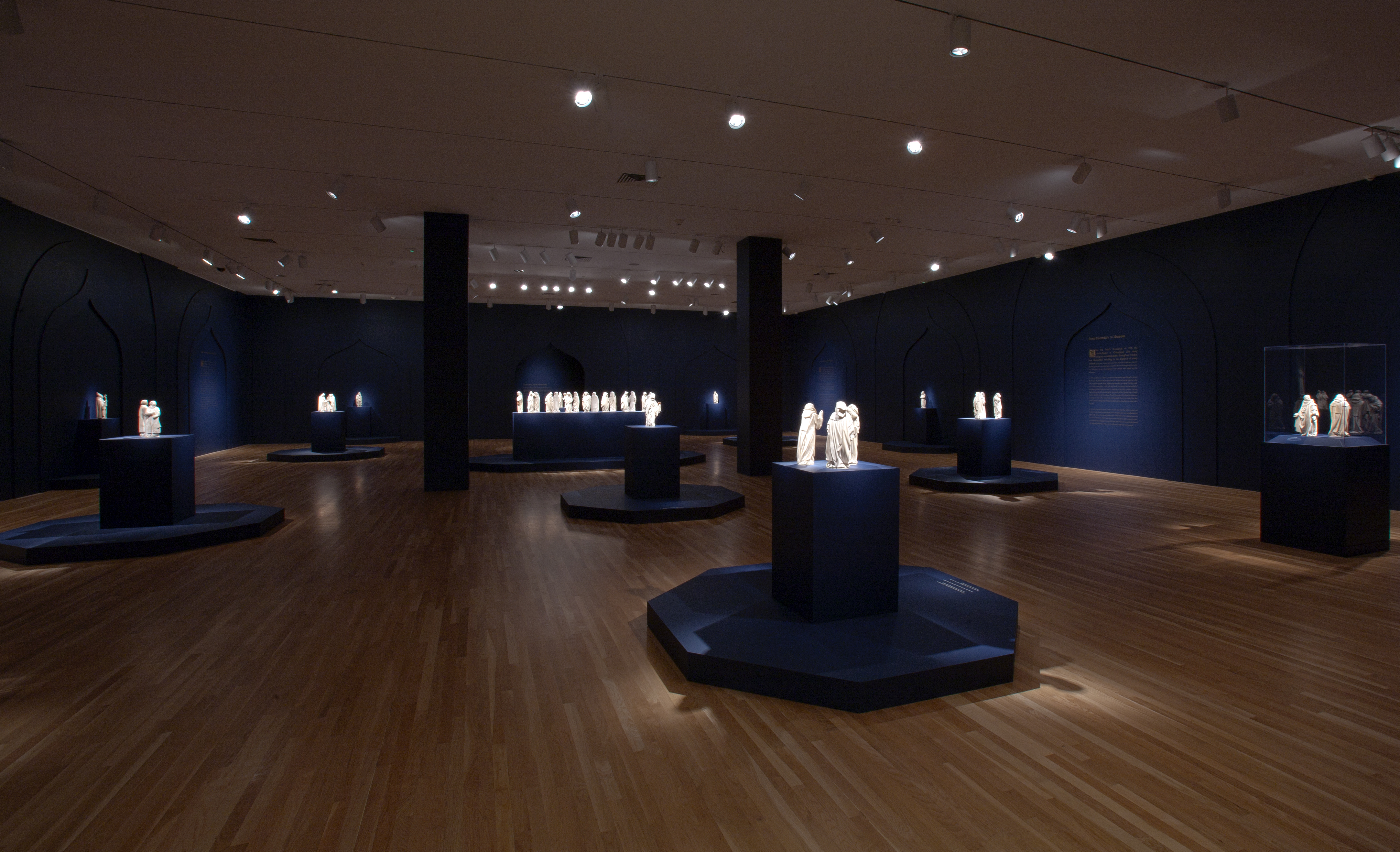
The Mourners: Medieval Tomb Sculptures from the Court of Burgundy at the Dallas Museum of Art, October, 2010.
Gabriela Truly is the Director of Collections Management at the DMA
